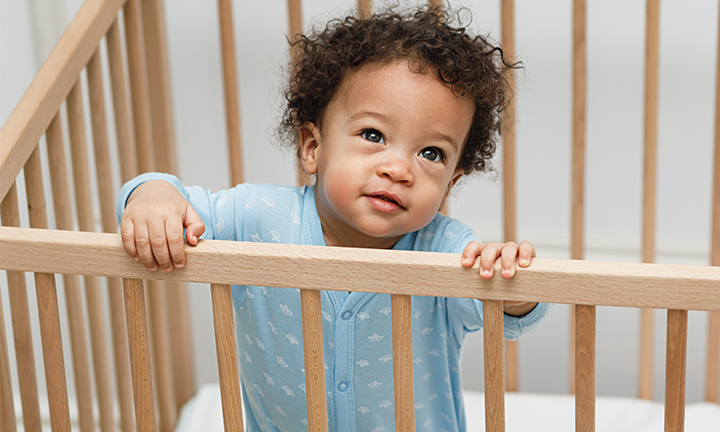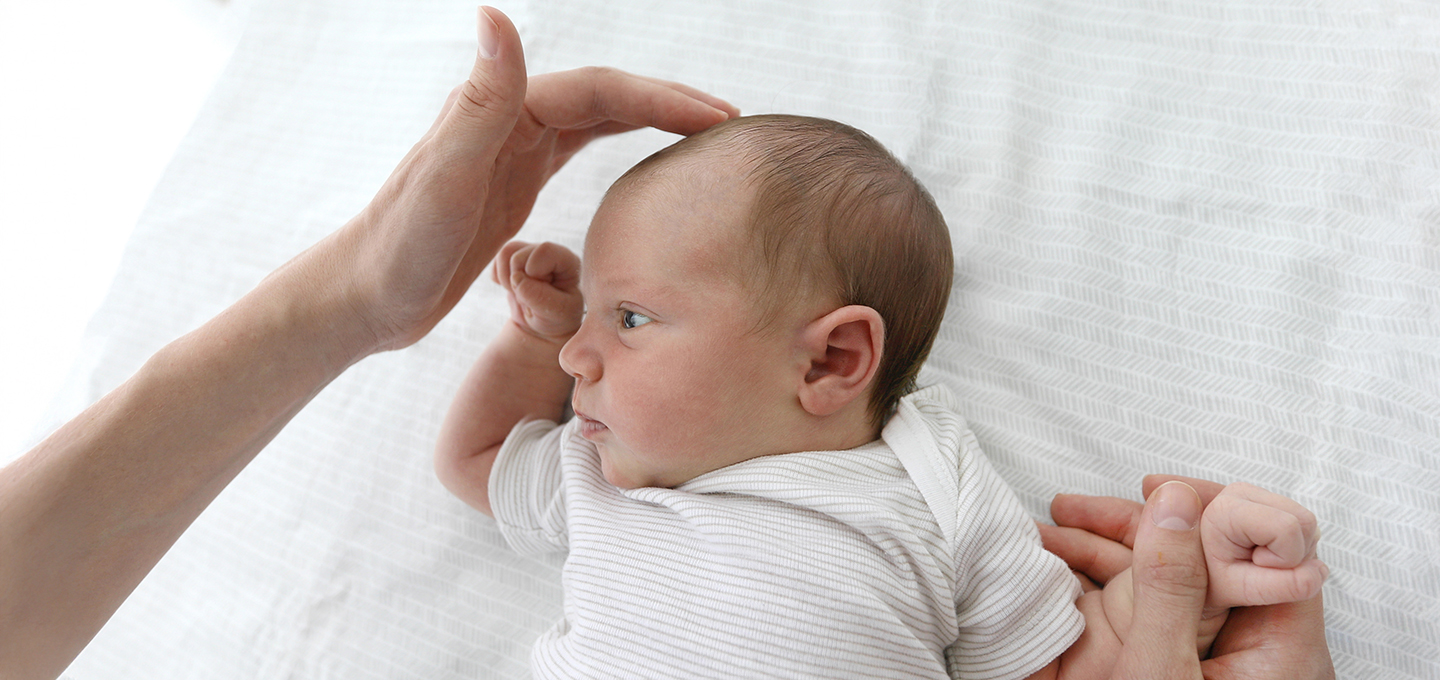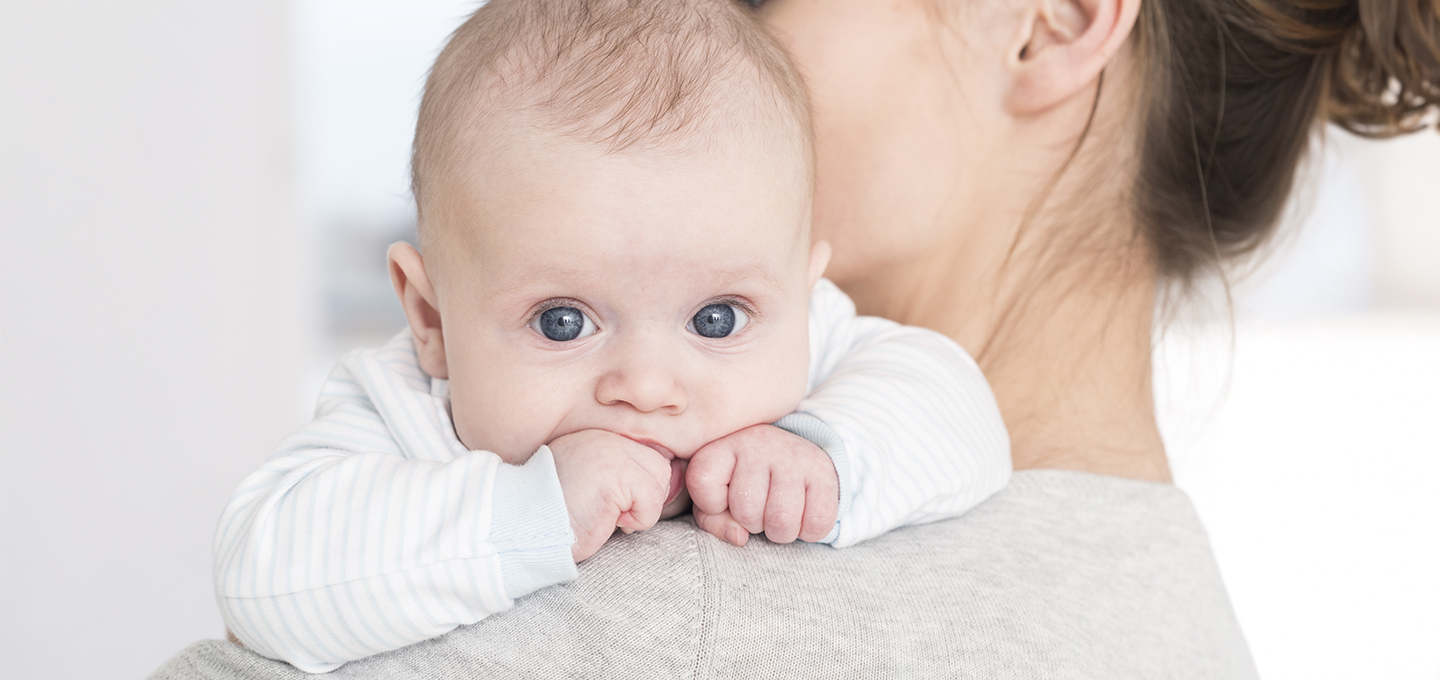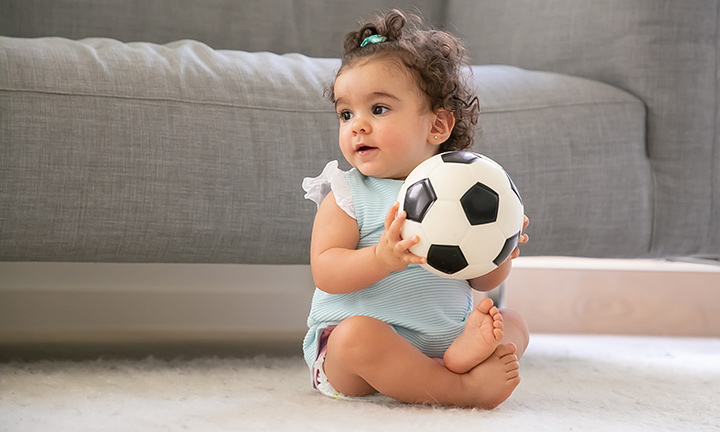
Fine Motor Skills in Infants and Toddlers
You might have heard of fine motor skills and may be wondering what exactly they are, and how you can support your child's development in this area. Find out what fine motor skills are and how you can help boost your baby's or toddler's fine motor skills as they grow.
What Are Fine Motor Skills?
Fine motor skills are the ability to coordinate movements of those small muscles in the wrist, hand, fingers, and even toes. In contrast, gross motor skills are the ability to coordinate the large muscle movements of the arms, legs, and feet, as well as the ability to coordinate and control the entire body as a whole.
You can encourage your child’s fine motor development through activities and play that are appropriate for their stage of development. All of it, whether it’s being able to move a toy block or pick up a small piece of food off a plate, serves as building blocks for eventually being able to handle more complex actions like writing or buttoning a shirt.
Remember that since each child develops at their own pace, the development of your child's fine and gross motor skills may happen earlier or later compared to another child.
Fine Motor Skills of a 1- to 3-Month-Old
Before they're 1 month old, your baby's hands will most likely be clenched most of the time, with their little fingers wrapped around their thumb. They can grasp anything you put in their hand, like a rattle, but they won't be able to do anything with the toy just yet. These early reflexes are part of developing fine motor skills in infants .
The same goes for your finger. If you stroke their palm, they will grasp your finger very firmly, but don't try lifting them this way as they can let go suddenly. This grip is referred to as the palmar grasp, and your baby doesn’t have control over it—it’s just one of many baby reflexes they're born with.
It's when your baby turns about 3 months old that you may notice them start to relax their hands, and they may now keep their hands partially open most of the time. Now, if you put that same rattle in their hand, they'll grab it, maybe bring it to their mouth, and let go of it when they lose interest.
How to Help Develop Your 1- to 3-Month-Old's Fine Motor Skills
To help encourage your baby's fine motor skill development around this time, here are some activities you can do:
In Summary
During this stage, you may see your baby's developing these kinds of fine motor skills:
Fine Motor Skills of a 4- to 7-Month-Old
By 4 months old, your baby may be clenching that rattle, shaking it, putting it in their mouth, and possibly even switching it from hand to hand.
Between 4 months and 7 months old, your baby may start to use their hands like a little claw or rake, picking up things they like by scraping their hand at the item.
They may claw at something with one hand, move it to their other hand, and twist their wrist around to take a better look at the object.
How to Help Develop Your 4- to 7-Month-Old's Fine Motor Skills
Here are some examples of activities you can do to help stimulate your baby's fine motor skill development around this time:
In Summary
To summarize, between 4 and 7 months of age, you may see the following fine motor skills emerge:

Fine Motor Skills of an 8- to 12-Month-Old
From about 8 months of age to the time your little one turns 1, you might be surprised by how well your baby may be doing with developing their gross motor skills, such as crawling, standing, and possibly even walking. But they're making good progress with their fine motor skills, too. Just take a closer look.
During this time, they may switch from the clawing or raking motion to the pincer grasp, which is using their thumb and forefinger or second finger to pick up objects as small as O-shaped cereal. You might even show them how to snap their fingers and they might start trying!
Don't be surprised if your baby starts flinging things around this time. They'll be so excited to explore this new development in their hand coordination that they may pick up objects and throw them repeatedly, hoping you'll be there to pick them up!
This behavior helps them understand cause and effect and can be a way to grab your attention. If they are in the mood to throw toys, you might consider giving them soft balls to play with instead of hard, wooden blocks, for example.
Keep them away from any breakables during this time, as you never know when they’ll send that salt shaker flying. Give them plastic cups and plates during mealtime for their own safety and yours! And, as part of your babyproofing efforts, place any breakable objects, like vases, out of reach.
How to Help Develop Your 8- to 12-Month-Old's Fine Motor Skills
Help your baby's fine motor skills improve by playing games together that encourage the coordination and control of their hands and fingers. Here are just a few examples:
In Summary
Hand and finger skills you may see your baby master between 8 and 12 months of age include:
Fine Motor Skills of a 1-Year-Old
Congrats! Your little one is now 1 year old! You'll be impressed by all the developmental progress you may be seeing in your toddler. Of course, the gross motor skills, such as those long-awaited first steps, may be the most impressive, but those fine motor skills aren't too shabby either.
These improved gross motor skills allow your child to better explore their surroundings, while giving them opportunities to hone their fine motor skills. They may not be able to pick up very small objects yet, but this achievement is not far off. However, they'll be very interested in examining and playing with bigger objects, like wooden blocks and puzzle pieces.
Around this time you may also notice how much your little one's hand and eye coordination is improving. Although you may notice them using one hand more than the other, this doesn't necessarily mean they're developing a dominant hand (i. e. , being left- or right-handed) just yet.
How to Help Develop Your 1-Year-Old's Fine Motor Skills
As your toddler gets older, you could try the following activities to help develop their hand and finger skills:
In Summary
Here are some examples of the ways you may see your 1-year-old developing their fine motor skills:

Fine Motor Skills of a 2-Year-Old
Although this period is sometimes known as the terrible twos, it really isn't all that terrible when you think about all the developments you'll see in your child.
Your child's hand and finger skills may be getting more and more impressive. Your little one may be able to pick up something as tiny as a pea, as well as make coordinated movements like opening a jar, for example.
How to Help Develop Your 2-Year-Old's Fine Motor Skills
Around this time your child's ability to focus will be much improved, and they're able to become absorbed in a creative activity for short stints. Here are a few examples of activities you can encourage your 2-year-old child to do to help improve their fine motor skills:
In Summary
Here are some of the fine motor skills you may see in your 2-year-old:
Fine Motor Skills of a 3-Year-Old
At 3 years old, your child will have a greater degree of muscular control. This means they may be able to move their fingers independently as well as together. You'll notice this when it comes to them holding a pencil or crayon, as their grip will be more like that of an adult.
During this time, they may be becoming more aware of their surroundings and the objects in it. This means they may position their toys in a certain way during playtime. They may use utensils and tools more like an adult, such as using child-safe scissors to cut out shapes from paper. They're getting better at using materials to create things, and may experiment with arts and crafts supplies and activities.
How to Help Develop Your 3-Year-Old's Fine Motor Skills
Here are some examples of activities that will engage your child and help boost their development:
Under your watchful eye, your child can lend a hand with safe household tasks that involve using fine motor skills.Some examples include:
In Summary
Here are some examples of fine motor skills your 3-year-old may have or soon develop:
Fine Motor Skills of a 4-Year-Old
At 4 years old, your child is a big kid now, and their hand and finger skills are almost completely developed.
How to Help Develop Your 4-Year-Old's Fine Motor Skills
Around this time, your child may take an interest in arts and crafts, games, and other activities that require dexterity. Some fine motor skill activities your child might find engaging include:
In Summary
Here are examples of some fine motor skills your 4-year-old may acquire:
FAQS AT A GLANCE
Fine motor skills are the ability to make movements with the muscles of the hand, fingers, wrist, and even toes. Your child will learn to control and coordinate these small muscles over the course of their development, mainly through play.
Fine motor skills for infants are crucial for everything from being able to button a shirt to being able to write.
Fine motor skills for infants are essential when it comes to daily tasks—the ones we often take for granted—like getting dressed, tying shoelaces, and typing an email. Encouraging your child's playtime activities isn't just about fun; play also helps your child gain the fine motor skills (and other skills) they will need each and every day.
Are you curious about learning more about your child's development? In the Pampers Rewards app, you can follow along with your child's month-by-month development while also earning Pampers Cash for all the diapers you buy. Just scan the diaper code, most boxes have two, earn $10 Pampers Cash after 10 diaper scans, and redeem for $$ off Pampers at one of your favorite retailers.










